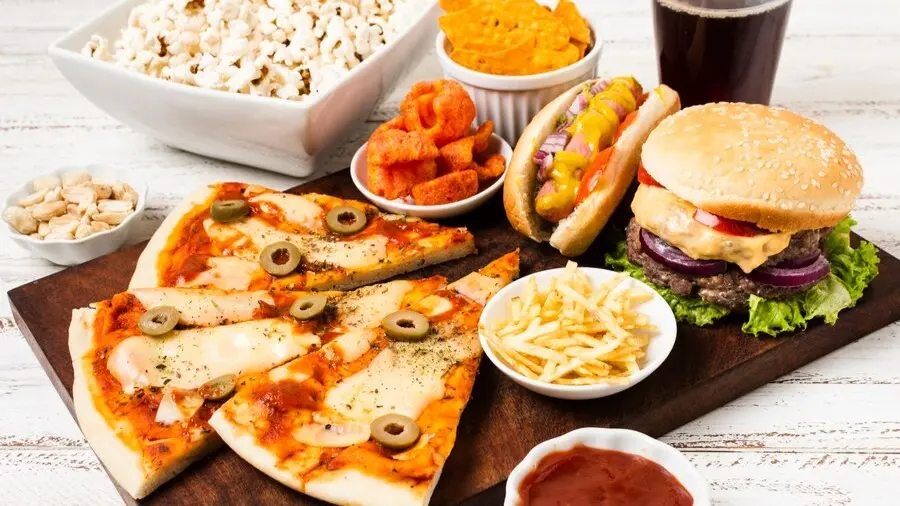Updated 1 May 2024 at 14:51 IST
How to Identify Stale Food, What to Do if You Eat It? Everything You Need to Know
Stale food has detrimental effects on one's health. Know all about how to spot food that has gone bad and its ill effects on the body.
- Health News
- 7 min read

On April 30, the Food Safety and Drug Administration Department officials collected samples from McDonald's and Theobroma outlets in Noida, Uttar Pradesh upon receiving complaints regarding the quality of food. The complaint was lodged by a man after he fell sick upon consuming aalo tikki burger and french fries from the Sector 18 outlet of McDonald's. Archana Dheeran, Assistant Commissioner (Food) FDA, Gautam Buddh Nagar told ANI, "We got a complaint on the portal against McDonald's. The customer fell ill after consuming aloo tikki and french fries. We have taken action in this regard and taken samples of palm oil, cheese, and mayonnaise.”
In a separate incident, a woman complained of stomach ache after receiving a stale cake from the Sector 104 outlet of Theobroma bakery. Following the complaint, an FDA team collected samples of the cake after receiving the complaint. The authorities have assured quick and effective solution in the matter.

The incident has raised an alarm about the quality of food available at popular and high-end chains and the awareness about stale food among the common public. Can you figure out if the food has gone bad? What to do if you accidentally consume stale food? Know all about the warning signs on your food that can help you stay away from falling sick on consumption.
Is stale food safe for consumption?
While it’s rare, some food items are safe to eat even if stale. Staleness can occur due to factors such as exposure to air, moisture, or improper storage conditions. Certain foods are more prone to spoilage than others. Dry, shelf-stable items like crackers or bread may be safe to consume even after they become stale, as long as there are no signs of mold or bacterial contamination.
Advertisement

The length of time a food has been stale can affect its safety for consumption. While some foods may still be safe to eat shortly after becoming stale, others may pose risks if they have been left out for an extended period. Items like crackers, cereal, chips, and certain types of bread may still be safe to eat after they become stale, especially if they have been stored properly and show no signs of mould or contamination. Leftover cooked foods like pasta, rice, or roasted vegetables may be safe to consume even if they have lost their original freshness, as long as they have been stored and reheated properly to kill any bacteria.
What happens if you eat stale food?
Consuming stale food can lead to various symptoms, ranging from mild discomfort to severe illness. Understanding these symptoms is crucial for identifying foodborne illnesses early and seeking appropriate medical attention. Most people feel nauseous and vomit after consuming stale food. Stale or spoiled food can contain harmful bacteria or toxins that irritate the gastrointestinal tract, leading to diarrhoea.
Advertisement

Consuming stale food can also result in abdominal discomfort, including pain, cramping, and a feeling of bloating. In more severe cases of foodborne illness, individuals may develop a fever as the body's immune system responds to the presence of harmful pathogens. Another symptom is headaches and body aches after consuming stale food, particularly if the foodborne illness affects the entire body. Watch out for these symptoms and if you experience these in an intensity make sure to seek medical attention.
How to spot if the food has gone bad?
While it is easier to check if the raw ingredients are stale while cooking, it can be trickier if a prepared meal is offered to you. However, there are definitive signs of checking if a meal or a particular ingredient has gone bad, and most of it can be noticed by the naked eye.
Meat

If refrigerated properly, meat or other meat products can remain fresh for a long time. However, you must discard the piece if you smell a foul odour from the product. Additionally, you can also look for a colour change, as meat tends to darken when it's stale. If the meat feels slimy or sticky to the touch, it's likely gone bad.
Dairy products
Dairy products like cheese, butter, paneer, and milk have a shorter shelf life. It is usually instructed on the packet itself that these products need to be consumed within a short time of purchase. However, if you happen to find a tin of cheese or other dairy items in the back of your fridge check for smell. If a sour or rancid odour emanates from dairy products, it's best to discard them. Curdling or separation in milk and changes in texture, like clumps in dahi or sliminess in cheese, are also signs of spoilage.
Fruits and vegetables
Another item that has a relatively shorter shelf life but rapid consumption is fruits and vegetables. Some items like bananas, apples, onions, and potatoes visibly grow mould making it obvious that they have gone bad. Experts suggest checking the texture of fruits and vegetables before consuming them. Sogginess or wilting in vegetables, and mushiness in fruits, suggest they are past their prime.
Frozen food
There is atleast one questionable frozen product in all refrigerators. It is only natural to get tempted into buying frozen items that look delectable at the time but are stocked at the back of the fridge for an unreasonable amount of time. If you happen to come across such a time, check for the expiry date. Frozen products usually have a ‘best before’ date and it is ideal to discard the packet after the date. You can also check for ice formation on the packet. Excessive ice crystals on frozen items, such as meat or vegetables, indicate thawing and refreezing, which compromises their quality. Look for white or greyish spots on the surface of frozen items, which indicate freezer burn and can affect taste and texture.
Bread and other bakery items
As in the case of McDonald's burgers, sometimes it may be the bun or bread that can bring down the overall quality of your meal. Stale bread tends to become hard and dry. Pressing on the loaf should not leave an indentation. Fresh bread has a pleasant aroma, while stale bread may smell musty or off.
Cake and other confectionary items

It is relatively easy to check whether a cake or pastry is past its prime. Check for any signs of mould, discolouration, or a change in texture. Stale confectionery items might taste bland or have a strange aftertaste. It is advised to keep a ready cake in the refrigerator until it is ready for consumption.
What steps to follow if you accidentally eat stale food?
Even the most cautious of people end up accidentally consuming stale food which can lead to potential foodborne illness. Knowing how to respond promptly and effectively is crucial for minimising discomfort.
Stop eating immediately - If you suspect that the food you've eaten is stale or spoiled, stop eating it immediately, even if you've only taken a few bites.
Stay hydrated - Drink plenty of water to stay hydrated, especially if you're experiencing symptoms like diarrhoea or vomiting.
Monitor symptoms- Pay close attention to any symptoms that develop after consuming stale food, such as nausea, vomiting, diarrhoea, abdominal pain, fever, headache, or dehydration.
Practice self-care - Get plenty of rest to allow your body to recover from the effects of foodborne illness. Stick to bland, easy-to-digest foods like crackers, rice, bananas, and toast (BRAT diet) to soothe your stomach and prevent further irritation.
Seek Medical Advice - If you experience severe or persistent symptoms after eating stale food, seek medical advice promptly.
However, it is best to steer clear of any spoiled food to avoid health setbacks. When in doubt, trust your senses. If a portion of food smells off, looks mouldy, or has an unusual texture, it's best to err on the side of caution and discard it. Avoid tasting stale food that may pose risks to your health, especially if it falls into the category of perishable or highly sensitive items.
Published By : Shreya Pandey
Published On: 1 May 2024 at 14:51 IST
